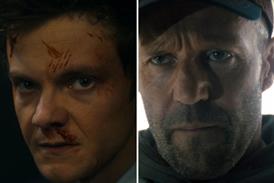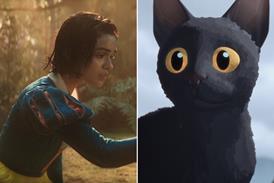Acclaimed Finnish director Pirjo Honkasalo adapts Pirkko Saisio’s novel about two young brothers during a pivotal weekend in their lives.
Concrete Night (Betoniyo)
Synopsis: A young man who is about to go away to serve a prison sentence, spends his last 24 hours of freedom with his impressionable 14-year-old brother. Based on Pirkko Saisio’s 1981 novel of the same name.
Director: Pirjo Honkasalo
Producers: Mark Lwoff and Misha Jaari of Helsinki-based Bufo (with credits including The Good Son)
Cast: Jari Virman plays the older brother, 15-year old Johannes Brotherus plays the younger brother
Co-producer: Sweden’s Platform Produktion
Finance: Finnish Film Foundation, YLE, Nordisk Film & TV Fond and Swedish Film Institute
Release: 2013
When welcoming a visitor to a set for her film Concrete Night, Finnish director Pirjo Honkasalo is matter-of-fact about the aesthetic imperfections. “The colours are disgusting on the set because it will be in black and white,” she says. “These are for textures and shapes.” She praises the producers for letting her take the risk of shooting in black and white, and laughs about how entire crew has gotten into the monochrome vibe. “My whole crew, when they see colors, they vomit,” she says with a big laugh.
The black-and-white move is to give a timeless quality to sides of Helsinki never seen on screen before — the story is adapted from Pirkko Saisio’s 1981 novel of the same name but updated to be more contemporary. “When I read the story I didn’t see colors,” the director adds. They are shooting on the ARRI Alexa.
It is the first time she has adapted a novel. “It’s a novel that opens to film quite easily, a lot of other directors wanted to make it,” she noted. “It was almost like watching a film when you read the book.” She added that the author had given her “total freedom.”
The story follows a young man who is about to go away to serve a prison sentence, spends his last 24 hours of freedom with his impressionable 14-year-old brother. Honkasalo singles out the younger actor Johannes Brotherus: “If he had been bad the whole film wouldn’t work. He has an unbelieveable ability to concentrate.”
Of that vulnerable young character, she says, “The ego is very fragile at that age…at that point in life your mind can really be manipulated.”
Honkasalo’s past films include Flame Top (1980 Cannes Competition); 250 grams (Venice 1983) and Da Capo (Cannes Directors’ Fortnight 1985). In the 1990s she concentrated on feature documentaries. She returned to fiction in 1998 with Locarno award winner Fire-Eater. Her recent credits include documentaries The 3 Rooms Of Melancholia and ITO, a Diary of an Urban Priest.
Of her moves between fiction and documentary, she says: “I started with fiction but I got fed up with talking about money. in documentary you talk about the story. But then I decided not to make any more docs. It’s not such a big difference. You’re still a director telling a story. The actors have to be just as true as in any doc.”
On the day of Screen’s visit, an impromptu BBQ provided impressive catering on set. That’s no surprise — producers Mark Lwoff and Misha Jaari are also planning a BBQ restaurant, B Smokery, to open in coming months in Helsinki’s meatpacking district (also home to a number of production companies).





















No comments yet